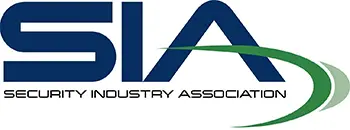SIA: Security Industry Association

SIA, the Security Industry Association, is a nonprofit organization that develops and publishes standards for the electronic security industry. Headquartered near Washington, D.C., United States, SIA influence is present on Capitol Hill, throughout the 50 states and across the world through its approximately 400 members. In addition to developing SIA standards, SIA is heavily involved in government relations and large-scale international market research. Standards from SIA are available both individually, directly through the ANSI webstore, and as part of a Standards Subscription. If you or your organization are interested in easy, managed, online access to standards that can be shared, a Standards Subscription may be what you need - please contact us at: [email protected] or 1-212-642-4980 or Request Proposal Price.
Below are SIA's best-selling standards. To find additional standards, please use the search bar above.
SIA AC-01-1996.10
Access Control Standard Protocol for the 26-bit Wiegand TM Reader Interface
The specifications in this standard define a commonly used interface between card readers and control panels used in the Access Control, Security, Time and Attendance, and other related industries. The standardization of the interface makes the design of readers and control panels uniform for manufacturers and makes system design and integration systematic for architects, designers, specifiers and users.
SIA DC-07-2001.04
SIA Digital Communications Standard - Receiver-to-Computer Interface Protocol (Type 2) - for Central Station Equipment Communications
This standard describes an interface format for communications between alarm signal receivers and automation computers. This standard is intended for use by equipment in security industry alarm monitoring centers, with possible uses in the areas of energy control and facilities monitoring and management.
SIA DC-03-1990.01 (R2000.11)
Digital Communications Standard - "SIA Format" Protocol - for Alarm System Communications
This specification describes a standard for digital communication to be used in the alarm industry, with possible future uses in the areas of energy control and facilities monitoring and management.
ANSI/SIA PIR-01-2000
Passive Infrared Motion Detector Standard - Features for Enhancing False Alarm Immunity
The standard details recommended design features for passive infrared detectors to reduce the incidence of false alarms when the detectors are used in security systems. Passive infrared detectors include detectors that incorporate passive infrared elements with other technologies.
SIA DC-04-2000.05
Digital Communications Standard - SIA 2000 Protocol for Alarm System Communications
This is a standard that specifies a communication protocol that will support current and future needs over a diverse range of control and receiver types. Specifically the intent is to define a flexible, universal, extensible reporting message format that can be used across a wide variety of physical media and transfer protocols. This SIA 2000 protocol structures the communication between a control and a central station receiver. The basic form of this communication conveys information such as alarms, alarm cancels, troubles, and restorals. This involves transferring information records from the control to the central station, and receiving acknowledgments from the receiver for each record. To support features such as remote panel programming and alarm verification through audio or video means, the protocol has provisions to extend the communication session. Once extended, the receiver can query the control for information or change the control's configuration. The extended session can also be used for verification.
SIA GB-01-1994.12
Acoustic Glassbreak Detector Standard - Features for Optimizing False Alarm Reduction and Detection
This technical report details recommended design features to reduce the incidence of false alarms with acoustic glassbreak sensors, or any sensor which uses acoustic glassbreak sensing used in security systems. In addition, specific recommendations are made regarding content in sensor installation instructions and application instructions, also for the purpose of reducing false alarms. Recommendations on design features, installation instructions, and application instructions for maximizing glass break detection are also included. Since the technology of acoustic glass break detection can involve a trade-off between detection and false alarm immunity, a focus solely on false alarm immunity will compromise glass break detection. Detection therefore has equal emphasis in this standard.
SIA DC-05-1999.09
Digital Communication Standard - Ademco r Contact ID Protocol - for Alarm System Communications
This standard details the specification for the "Ademco r Contact ID" communication format, originally developed by the Ademco Group, a division of the Honeywell Solutions Group. The purpose of this standard is to detail the Contact ID signaling format such that it can be adopted by any manufacturer of digital transmitters or receivers. Documentation and distribution of this communication format is intended to provide an across-the-board compatibility of equipment designed to this standard regardless of manufacturer. This communications format utilizes standard DTMF tones for transmission of the information.





